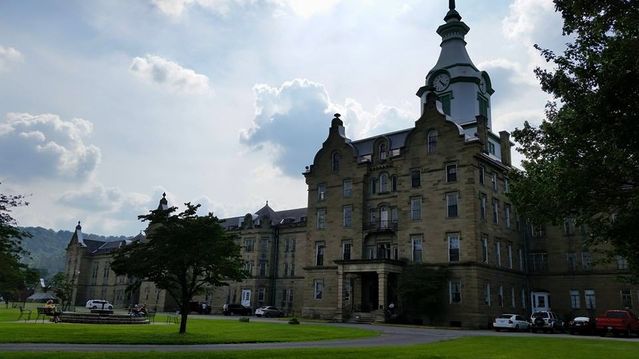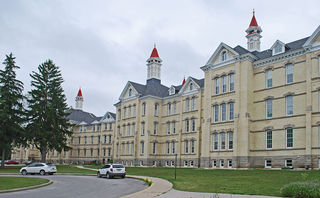Psychiatry
The American Mental Asylum: A Remnant of History
The massive state hospitals of yesteryear are a piece of psychiatric history.
Posted July 13, 2018 Reviewed by Abigail Fagan
Growing up as a boy in northern New Jersey, my first encounter with psychiatry was driving with my grandparents past a large, imposing hospital complex in Essex County called Overbrook. Built in a cottage style, the hospital center was comprised of various buildings spread out over the beautiful rolling hills of Cedar Grove, New Jersey.
Overbrook was just one of several asylums in northern and central New Jersey that were still in operation when I was a boy, including Greystone Park in Morris Plains and Marlboro State Hospital in Monmouth County. Like most American asylums, all three closed permanently in the late 1990s and 2000s.

The mass closure of state mental hospitals in the United States coincided with the advent and popularity of neuroleptic medications, the patient rights movement, and the well-intentioned, but poorly delivered, national transition towards community-based mental health care (see my article with Allen Frances, M.D., in Psychiatric Times on this subject here).
At one point in the 1950s, more than half a million Americans were confined to state psychiatric institutions, many of them for life. Today, the total number of state psychiatric beds in the U.S. sits around 37,000, with most beds on short-term, acute inpatient units in general medical hospitals.
The state mental hospital occupies a position of great importance in the history of American psychiatry. Their grand architecture and historical value reflect a special era of psychiatry, even with its shortcomings. These magnificent buildings, and the psychiatric beds once contained within them, are dwindling as the years pass. Their history must be preserved.
Best known as a tireless advocate for psychiatric care for the poor and disenfranchised, Dorothea Dix is chiefly responsible for the mass construction of state mental hospitals in the U.S. in the 1800s. Waves of immigration from Ireland, Germany, and Italy led to rapid population growth, prompting a greater need for appropriate medical and psychiatric treatment. Dix, a hero in the field of social work, cited the mental health of the citizenry to be of vital importance to the state. The American mental asylum was born.
A second influential figure in the history of the American psychiatric hospital is Thomas Story Kirkbride. A Pennsylvania psychiatrist, Kirkbride founded the Association of Medical Superintendents of American Institutions for the Insane, a group that later became the American Psychiatric Association. He is best known as the originator of the Kirkbride Plan for the construction of state mental hospitals. Kirkbride hospitals represent the most classic and numerous of the asylums constructed in the 19th century.
The structural features of Kirkbride hospitals reflected Dr. Kirkbride's approach to treating mental illness, which emphasized exposure to natural light and proper air circulation. Built with characteristically long, rambling wings arranged en echelon, Kirkbride hospitals maximized sunlight and fresh air and were intended to provide the utmost privacy and comfort for patients. The hospital building itself was meant to have a curative effect, "a special apparatus for the care of lunacy, [whose grounds should be] highly improved and tastefully ornamented" (Kirkbride, 1854). Thus, the idea of institutionalization was central to Kirkbride's plan for effectively treating persons with mental illness.

Kirkbride hospitals tended to be large, imposing, Victorian-era buildings surrounded by extensive grounds, often including farmland which was sometimes worked by patients for exercise and therapy. The architecture of these buildings was stately and dramatic, and they were originally well appointed with furnishings and other amenities. Writing in 1854, Kirkbride stated, "There is no reason why an individual who has the misfortune to become insane should, on that account, be deprived of any comfort or even luxury."
By 1900, however, the idea of "building-as-cure" had been largely discredited in psychiatric circles, and these massive structures started to become too expensive to properly maintain. In the 20th century, Kirkbride's hospitals became vastly overcrowded with a growing number of psychiatric inpatients. Pilgrim State Hospital in Brentwood, New York, provides an example of this problem of overcrowding. Once the largest psychiatric hospital in the world, Pilgrim housed 13,875 patients at the peak of institutionalization in the 1950s.
Another example of the mass institutionalization of the mid-twentieth century is Weston State Hospital (formerly the Trans-Allegheny Lunatic Asylum) in Weston, West Virginia. A few years back, I had the chance to visit this beautiful Kirkbride hospital, once slated for demolition and now a museum of psychiatry. At its peak population, it housed over 2,600 patients in the 1950s. It was designed to treat 250. Weston was closed permanently in 1994.

Today, most Kirkbride hospitals sit abandoned, neglected, and vandalized, though several are still in operation (at greatly reduced capacity) or have been renovated for uses other than mental health care. Perhaps the best example of mixed-use renovation is the former Traverse City State Hospital in Traverse City, Michigan. Closed in 1989, the hospital has been converted into residential condos, offices, and retail space.
The state mental hospital reflects a bygone era in American psychiatry. Gone are the days of long-term psychiatric hospitalization and housing for the most severely mentally ill. Instead, for better or for worse, patients in need of psychiatric admission are treated for five or seven days and discharged back to the community—sometimes without a place to live.
While many state mental hospitals in the U.S. have been closed and demolished, their history will stand forever as a remnant of the psychiatry of years past.
References
Kirkbride, T.S. (1854). On the construction, organization, and general arrangements of hospitals for the insane. Philadephia, PA: (n.p.).




